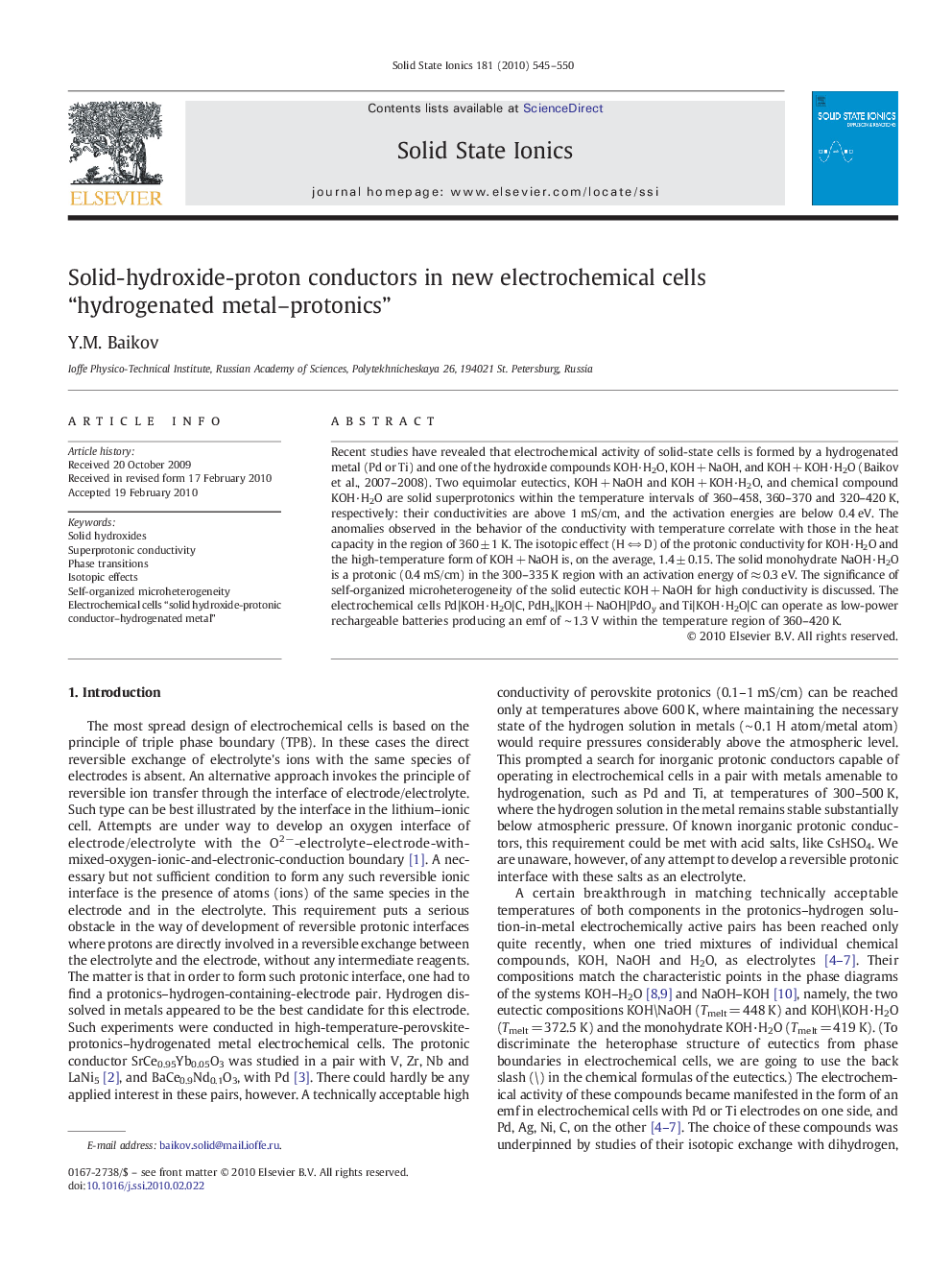| کد مقاله | کد نشریه | سال انتشار | مقاله انگلیسی | نسخه تمام متن |
|---|---|---|---|---|
| 1296691 | 1498349 | 2010 | 6 صفحه PDF | دانلود رایگان |
عنوان انگلیسی مقاله ISI
Solid-hydroxide-proton conductors in new electrochemical cells “hydrogenated metal-protonics”
دانلود مقاله + سفارش ترجمه
دانلود مقاله ISI انگلیسی
رایگان برای ایرانیان
کلمات کلیدی
موضوعات مرتبط
مهندسی و علوم پایه
شیمی
الکتروشیمی
پیش نمایش صفحه اول مقاله

چکیده انگلیسی
Recent studies have revealed that electrochemical activity of solid-state cells is formed by a hydrogenated metal (Pd or Ti) and one of the hydroxide compounds KOH·H2O, KOH + NaOH, and KOH + KOH·H2O (Baikov et al., 2007-2008). Two equimolar eutectics, KOH + NaOH and KOH + KOH·H2O, and chemical compound KOH·H2O are solid superprotonics within the temperature intervals of 360-458, 360-370 and 320-420 K, respectively: their conductivities are above 1 mS/cm, and the activation energies are below 0.4 eV. The anomalies observed in the behavior of the conductivity with temperature correlate with those in the heat capacity in the region of 360 ± 1 K. The isotopic effect (H â D) of the protonic conductivity for KOH·H2O and the high-temperature form of KOH + NaOH is, on the average, 1.4 ± 0.15. The solid monohydrate NaOH·H2O is a protonic (0.4 mS/cm) in the 300-335 K region with an activation energy of â 0.3 eV. The significance of self-organized microheterogeneity of the solid eutectic KOH + NaOH for high conductivity is discussed. The electrochemical cells Pd|KOH·H2O|C, PdHx|KOH + NaOH|PdOy and Ti|KOH·H2O|C can operate as low-power rechargeable batteries producing an emf of â¼Â 1.3 V within the temperature region of 360-420 K.
ناشر
Database: Elsevier - ScienceDirect (ساینس دایرکت)
Journal: Solid State Ionics - Volume 181, Issues 11â12, 29 April 2010, Pages 545-550
Journal: Solid State Ionics - Volume 181, Issues 11â12, 29 April 2010, Pages 545-550
نویسندگان
Y.M. Baikov,